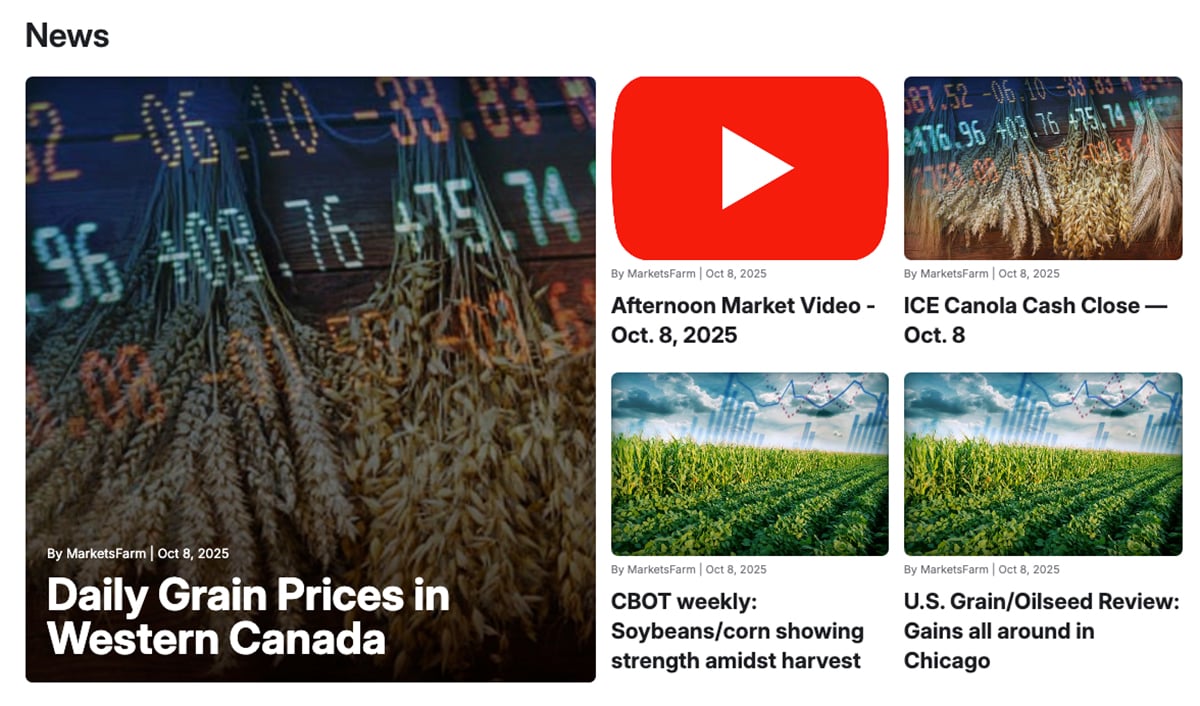ICE futures canola contracts fell to their lowest levels in two months during the first week of August, with speculative long liquidation behind some of the selling pressure.
“It’s hard to rally any market without a crop threat … and we don’t have that,” said analyst Mike Jubinville.
The chart for the November canola contract was forming a “head and shoulders top,” which would be bearish from a technical standpoint. Jubinville said a settlement below $670 per tonne in November canola would confirm the chart signal, with the next downside target in the $610 to $620 per tonne area.
Read Also

VIDEO: Catch up with the Western Producer Markets Desk
The Western Producer Markets Desk provides daily updates on agricultural markets, with recent video commentary including looks into canola, wheat, cattle and feed grains.
The November contract settled at $669.70 per tonne Aug. 6. That put the market below its 100-day moving average for the first time in four months.
However, while the technical uptrend may be broken, he expected such a large drop was unlikely and noted that the underlying fundamentals remain supportive for canola.
Solid demand over the past marketing year means that carryout stocks ahead of the 2025-26 harvest will be very tight, and even with good yields, total supplies will remain tight in 2025-26.
Another factor to watch will be the latest threats against Russian oil exports by the United States, said Jubinville. If increased U.S. tariffs on importers of Russian oil, such as India, lead to rising crude oil prices, that could spill into vegetable oil markets.
Meanwhile, projected bumper crops for U.S. corn and South American soybeans are causing futures prices to move lower, and there are no signs of stopping any time soon.
Jack Scoville of Price Futures Group in Chicago said in addition to the large size of the crops, a lack of severe weather and decent crop conditions are also pressuring prices.
The September corn contract on the Chicago Board of Trade hit a contract low of US$3.75 per bushel on Aug. 6. September Chicago soft wheat fell to a new contract low at $5.04 per bu. and September Kansas City hard red wheat also hit a new low at $5.0325. A contract low of $5.6850 per bu. was also reported for September Minneapolis spring wheat on Aug. 6. Meanwhile, November soybeans dipped to $9.8125 for its lowest price since April 9.
“It looks like everybody’s aiming towards $3.50 (per bu.) for (September) corn. For November beans, $9.50 per bu., probably closer to $9 when it’s all said and done,” Scoville said.
“The demand for corn has been excellent until now, but it’s expected to tail off because of a big crop in Brazil. The demand for soybeans has been better, but it hasn’t been too bad.”
He added there is a consensus in the trade that this year’s crops will be especially large.
“Corn yields are expected to be 186 (bu. per acre) or so. Bean yields (in the United States) are at 55. We can do that pretty easily. I think people in general are looking for big crops, even farmers,” Scoville said.
The U.S. Department of Agriculture estimated last month that the 2025-26 corn crop would have an output of 15.705 billion bu. with a yield of 181 bu. per acre. The U.S. soybean crop would be at 4.335 billion bu. with a yield of 52.5 bu. per acre. Corn and soybean production for Brazil in 2025-26 wsa pegged at 131 million and 175 million tonnes, respectively.
As farmers examine their fields prior to harvest in August and September, Scoville said there should be a better idea on corn and soybean yields in the coming weeks. He added there is a small chance corn and soybeans’ price slumps could come to an end.
“There’s been talk of pollination issues with the corn,” he said.
“But if demand stays strong, we could have a chance to recover prices.”

















